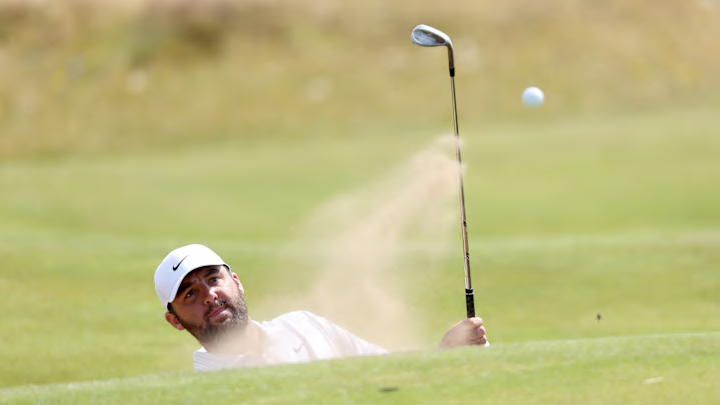In addition to the shorter flagsticks and funky, sod-layered bunker walls, both of which are easy to see, there are plenty of things that only the golfers playing can see and feel.
According to Scheffler, there are plenty of adjustments that have to be made, starting with the way the ball moves.
“It spins a bit more than it does at home,” he explained. “When you're playing shots into the wind, it will typically have much more of an effect on what the golf ball does than what we're used to.”
The firm fairways, the different bunker designs, and the speed of the greens are all factors that players must consider. Anyone who watched the Scottish Open, for example, noticed the slower speed of the greens. They are slower because the seaside courses in the British Isles get so much wind that if the green speeds were 13, they might not be able to keep golf balls on the putting surface.
There may be days that are so windy that golfers can’t take enough club to get the ball where they want it to go, and there may be other days when they have to take half as much club as they usually would for that same distance. But so far, Troon has not been impossible or unplayable.
“You could hit drivers if you wanted to and could hit irons if you wanted to as well,” Scheffler noted. “A lot of it is game-time decision based on the wind.”
Scottie Scheffler expects to hit driver on the back nine holes at Royal Troon.
This is because they are significantly longer and have been playing into the wind. But, of course, that could change.
He does like the quirky Postage Stamp hole, the par three 8th, so called because the green looks like it’s no bigger than a stamp, back in the days when people used snail mail instead of email. The length is just 123 yards.
“I think No. 8 is great,” he said about it. “I get frustrated sometimes when the solution to distance is just making holes further and further, and then it only just encourages guys to try to hit the ball further and further and not worry as much about controlling your ball.”
He said par threes didn’t have to be 230- 240-250 yards or more to test skill or be a good and enjoyable hole.
“It can be 120 yards,” he continued. “I think holes like 12 at Augusta and 17 at Sawgrass, the best par-3s in the world are short par-3s. They're not overly long par-3s.”
They may be short, but both of those holes can drive golfers nuts because it seems like you could throw a ball that far but still have trouble hitting to the greens of the little monsters.
“If I don't hit the green on No. 8, it's mostly likely going to be a bogey unless you're in the front of the green,” he added.
Even though the holes can be quirky, the grass can be a challenge, and the rough can be tall at British Open courses, Scottie Scheffler likes the overall challenge of playing them.
“I just feel like you have to be more creative here,” he explained. “When I do come over here, this is really how golf was intended to be played. I feel like there's a lot more opportunity for shot making and being creative around the greens.”
He also noted that the design of the courses allows golfers who don’t hit the ball far in the air to run it along the ground and still advance toward the green.
“I can just see how somebody who is either a bit older or maybe not as talented as some of us out here, like you take a 10 handicap that only carries it 200 yards, they can run it up and have fun and not lose many balls,” he added. “So it really is fun to come over here and play.”
